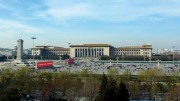The following is an edited excerpt from the World Gold Council and the Boston Consulting Group’s report The Ups and Downs of Gold Recycling. For more information and to access the full report, visit www.gold.org.
Gold recycling fluctuates fluidly with gold prices and economic conditions. In 1999, it accounted for just 17% of the total gold supply. In 2009, with higher gold prices and the global economy faltering, recycled gold hit a record 1,728 tonnes, accounting for 42% of the total gold supply.
When the global financial crisis struck, a new breed of recycling collectors sprang up in Western markets to collect high-value recyclable gold from cash-strapped consumers selling their jewellery. In the U.S., a swarm of cash-for-gold shops descended onto Main Street, many supported by large call centres and big-budget media campaigns. They enjoyed healthy profit margins — for a while. Indeed, in 2009, Cash4Gold.com, a mail-in refinery that snapped up gold, silver and platinum jewellery, ran a lavishly expensive, 30-second advertisement during the Super Bowl. Just three years later, it filed for bankruptcy. Its fate exemplified the sharp contraction of the cash-for-gold business. And in recent years, as gold prices fell and the global economy began recovering, gold recycling decreased: 2014 saw the lowest level of recycling since 2007 — 1,122 tonnes — accounting for just 26% of total supply.
Gold recycling’s responsiveness helps keep the global gold market in balance. Mine production, which generates the lion’s share of the total annual gold supply, takes longer to respond to price changes. For example, for 126 mines that started production from 2004 to 2013, the average development time to production was 17 years.
To better understand the drivers of gold recycling, the World Gold Council conducted an econometric analysis of annual recycling data from 1980 through 2012. It confirmed three major themes:
• The recycled gold supply increases over time. Over the long run, it grows by 4% annually, in part owing to more jewellery consumption. According to Thomson Reuters GFMS, jewellery stock has grown 2–9% per year since 1982, standing at nearly 86,000 tonnes as 2013 ended.
• Economic crises boost recycling. When financial crises strike, people turn to gold as a liquid asset to raise cash. The Asian financial crisis in the late 1990s boosted recycling by 19%, mostly in Asian countries. The 2008–09 global financial crisis made a bigger impact, increasing global recycling by 25%. However, the effects of a sharply higher gold price as well as the financial crisis would have been combined over this period. We believe that, in general, financial crises boost gold recycling over and above a price effect, by 20%.
• Changes in gold price have an immediate but temporary effect. Price changes account for 75% of annual changes in gold recycling once we account for major economic crises. For every 1% increase in price in a year, the supply of recycled gold will increase 0.6%. If the price stabilizes at this higher level, the increase in recycling will reverse in the following year. This is probably because a price increase flushes out the near-market supply, a dynamic that does not repeat the next year.
There are regional differences in gold recycling, too. For example, North America and Europe’s contribution to total recycling grew from 27% in 2004 to 43% in 2011, largely driven by the global financial crisis. Within Asia, as China’s stock of gold has grown, so too has its level of recycling. Meanwhile, India’s level of recycling has remained fairly stable and makes up a remarkably small part of its total gold stock — less than 0.5% of the estimated annual 22,000 tonnes in India.
We also analyzed country-level data to see how economic conditions and price changes affect a nation’s share of global gold recycling. We found that measures of economic distress, especially the unemployment rate, explained 60–65% of annual changes in this share. In India, for example, a 1% rise in unemployment leads to a 1.3% increase in India’s share of global recycled gold. Price changes play a less important role, accounting for only 30% of annual changes in a country’s share of global recycled gold.
Taking into account these insights and recent macroeconomic trends, we expect global recycling to remain low in 2015.






Be the first to comment on "Facts ‘n’ figures: Tracking trends in global gold recycling"